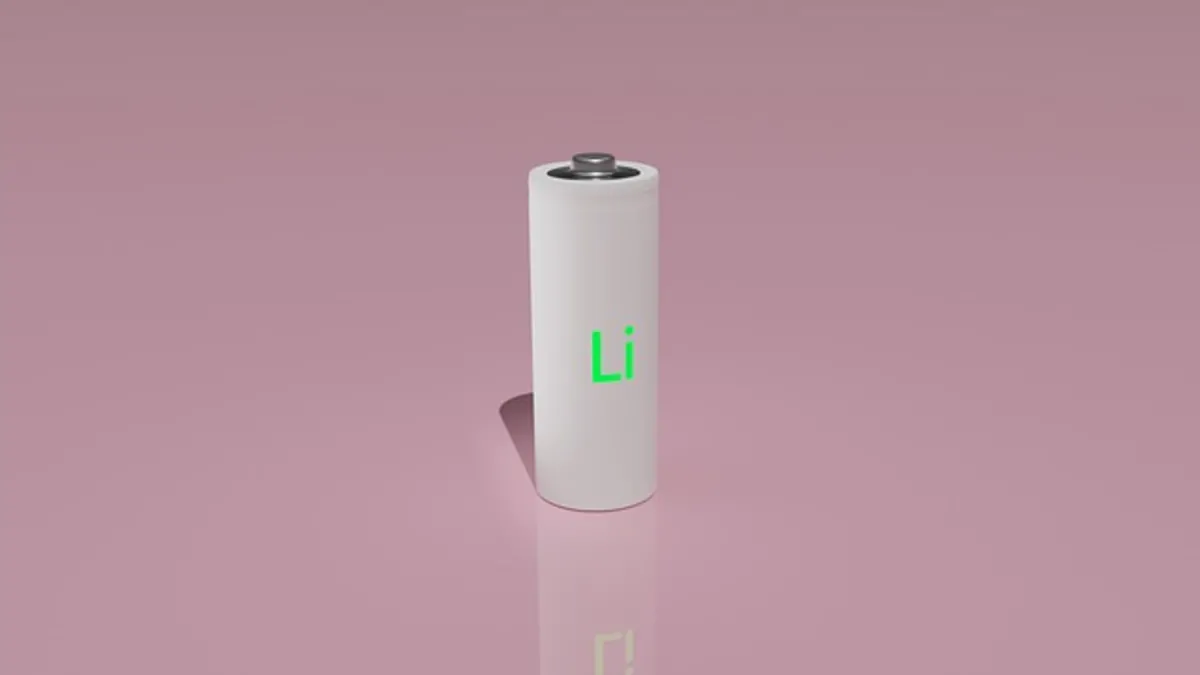

Today’s technologically evolved civilization relies on lithium-ion batteries to power smartphones and electric cars. They have a limited lifespan and can degrade over time, affecting device operation. Lithium-ion batteries need frequent testing to work correctly. One of the best ways to test these batteries is using a multimeter, which DIYers and pros use. Learn more and complete a multimeter test for lithium-ion batteries.
Understanding Lithium-Ion Batteries Before starting the testing process, it’s essential to know how lithium-ion batteries generally work. Unlike regular batteries, lithium-ion batteries can be charged again and again. They get their power from lithium ions. The positive and negative electrodes, the liquid, and the insulator make up these batteries. When fully charged, the voltage of a lithium-ion battery is usually between 3.2 and 4.2 volts. It is essential to know these numbers before checking.
Why Test Your Lithium-Ion Battery?
Even if they are improved, lithium-ion batteries are not immune to the effects of wear and tear. Alterations in temperature, excessive charging, and prolonged use are just a few of the things that might contribute to their deterioration. The following are some of the most important reasons why you should test your lithium-ion battery:
Regular testing helps assess the battery’s performance, ensuring it delivers the expected power output.
Testing helps identify potential issues, reducing the risk of battery-related accidents like leakage or swelling.
Maintaining a healthy battery ensures the longevity and optimal performance of the electronic devices it powers.
Tools You Will Need
Gather the items listed below to carry out an exhaustive test:
A digital multimeter is preferable due to its accuracy and ease of use.
Safety goggles and gloves are essential to protect your eyes and hands.
The battery you want to test ensures it’s not visibly damaged.
Steps to Test a Lithium-Ion Battery Using a Multimeter
To begin, check that you are in a location that has adequate ventilation and that you are equipped with safety goggles and gloves. To avoid potential dangers, the testing should be stopped if the battery appears damaged.
Adjust your multimeter so that it is reading in the DC Voltage mode. A ‘V’ with a straight line or dashes above it, denoting DC voltage, is often a unique setting on most multimeters. This setting may be found on most digital multimeters. Choose a voltage range that encompasses the voltage that you anticipate your lithium-ion battery to have, which is usually somewhere around 20V.
Place the multimeter’s black probe (negative) on the battery’s negative terminal and the red probe (positive) on the positive terminal. The multimeter will display the voltage reading. A fully charged lithium-ion battery should read around 4.2 volts. If the voltage reading is significantly lower, the battery might need recharging or replacement.
A load test is something you should consider doing if you want a more in-depth review. While your multimeter is still connected to the battery, turn it to a setting with a low current, such as 200 mA. Measure the flow of electricity by connecting the probes in a line to the battery and seeing the results. A good lithium-ion battery should maintain a constant flow of current and avoid experiencing a significant decrease in voltage. This demonstrates that the battery is capable of withstanding a load.
Examine the results of the tests once they have been completed. If the voltage of your lithium-ion battery falls within the normal range and the load test reveals that a consistent flow of current is being produced, it is likely in good condition. However, if the voltage is significantly lower than usual or fluctuates while the load test is being performed, you should probably consider purchasing a new battery.
Using a voltmeter to test your lithium-ion batteries is a must for anyone who uses products that run on these batteries. Regular checking not only makes sure that your electronics work well but it also keeps them safe and helps them last longer. By following the steps in this guide, you can test your lithium-ion batteries with confidence, giving you the information you need to make choices about how to use them and when to replace them. Remember that safety is always the most important thing, and if you aren’t sure about the results or the state of your battery, you should ask a professional for help. Test your batteries often to stay informed, stay safe, and keep your gadgets charged for longer.
Hey there! Ready to dive into what's happening across the African continent? From social movements…
Sports fans are constantly looking for ways to get immediate access to live events, highlights,…
In the digital world where online video content reigns supreme, having the correct tools to…
Imagine a new platform that offers an array of the best online games, all under…
Drive Mad Unblocked 76 is not only another online racing video game; it's a thrilling…
Greetings, fellow casino aficionados! Have you heard about the latest thrill in the world of…